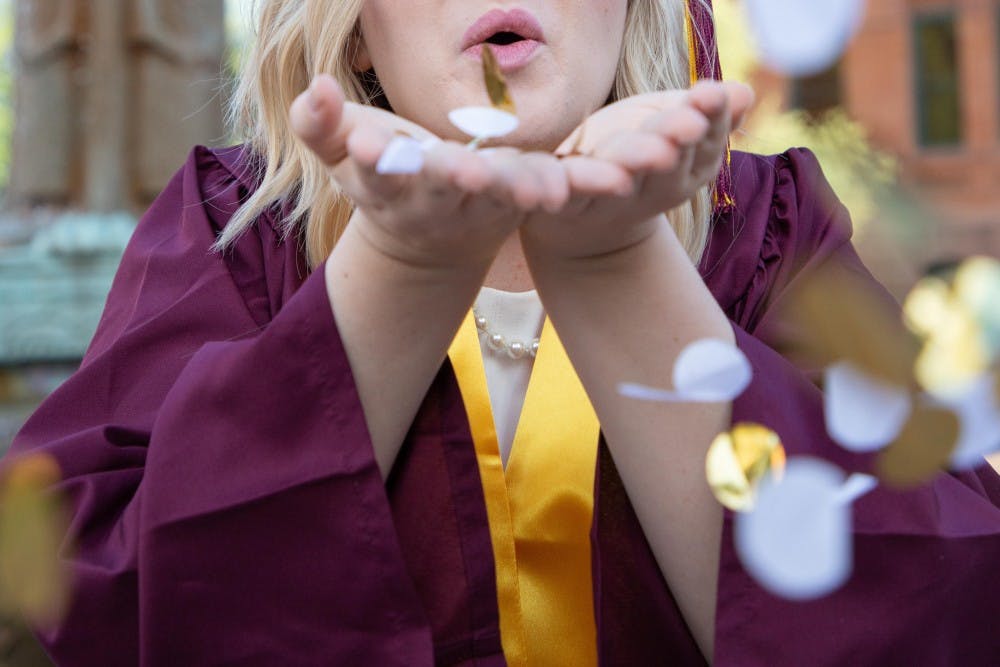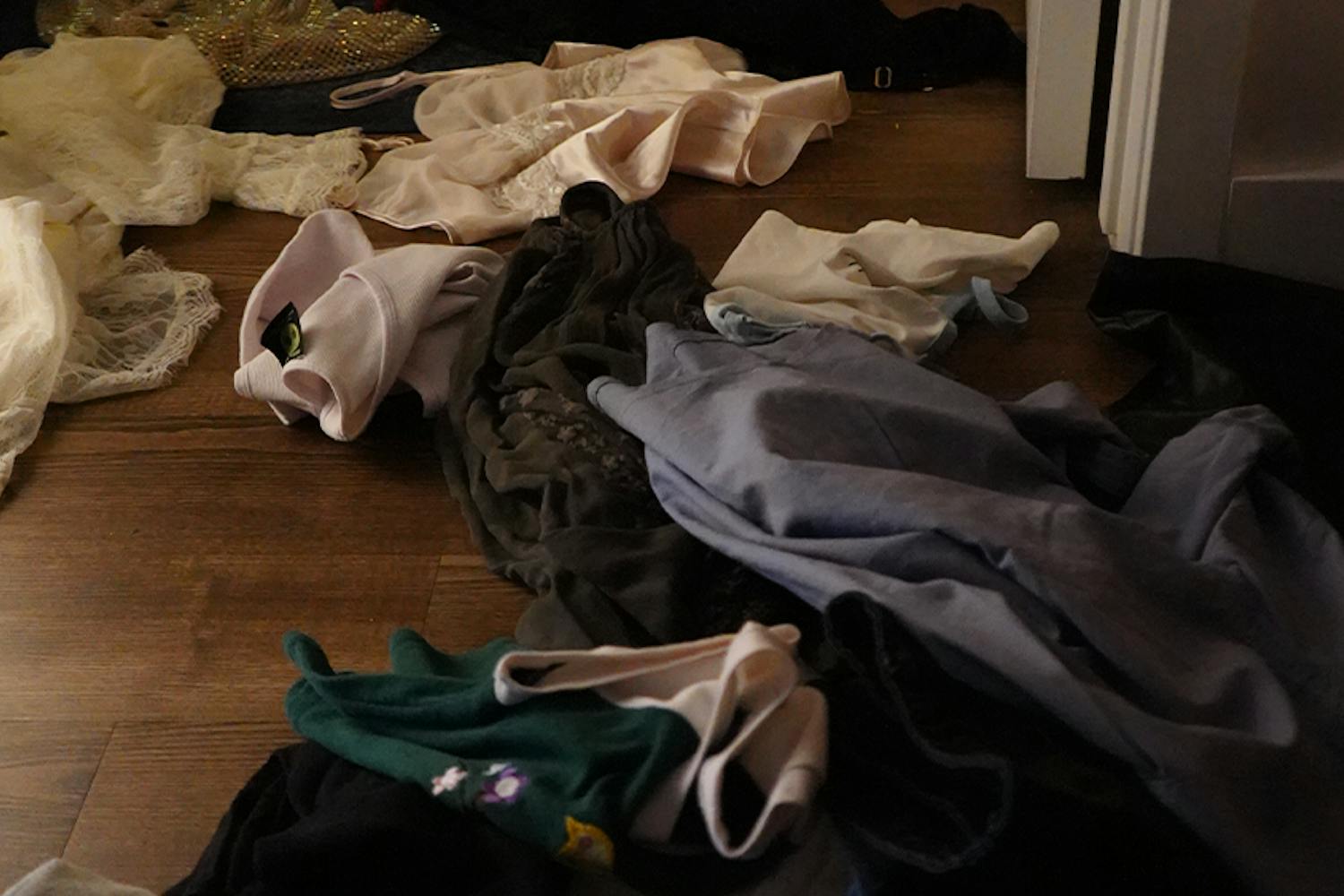As graduation season approaches, the manicured lawns and stone paths of Old Main become a hotspot for photos and celebrations – and all the glitter that comes with it.
But while the popularity for bringing glitter to the site might only last a few weeks, the environmental damage it can leave behind is long-lasting.
Alana Levine, director of grounds and Zero Waste at ASU, said there are two main problems with glitter: It can be incredibly hard to clean up, and because it’s compromised of millions of tiny pieces of plastic, it can also harm the environment.
“It’s essentially putting tiny, tiny non-recyclable plastic into the environment," she said. "There’s no way to kind of gather that up and recycle it.”
Glitter is made of small, cut up sheets of plastic combined with reflective materials such as aluminum, and is often used in cosmetics or craft projects. When glitter is broken down its materials then become microplastics which are harmful to the ecosystem and often consumed by marine wildlife, according to the National Geographic.
Levine said it takes a lot of resources and time to clean up glitter and its minuscule size can add to the difficulties, allowing it to make its way into the environment in several different ways.
“It kind of gets all over the place, so that takes time, it takes resources," she said. "It sometimes takes us several tries to get all of it.”
She said she challenges people to come up with an alternative to throwing glitter or confetti for their pictures, and that she would be open to brainstorming with them, adding that because of ASU's innovative reputation, it would be a good opportunity for students to create a solution that makes exciting graduation pictures and is also environmentally-conscious.
In 2018, over 60 British music festivals pledged to ban single-use plastics, which includes glitter, from their festivals sites by 2021. Biodegradable glitter is also an option for consumers to purchase and is oftentimes made with cellulose, a plant-based film produced from eucalyptus tree fibers.
Michael Meyer, grounds manager for ASU's facilities management-grounds service, said that on top of being a problem to clean up, it's important for people to remember that when they are throwing confetti or glitter in the air, they are essentially littering.
"I would just ask them if they would think that in any other context that would be something that they would do and feel ok about," he said. "It’s great that you’re celebrating but that doesn’t give you a license to throw litter on the ground.”
Meyer said that this problem is the most intense around graduation time and there are certain spots that are more saturated with glitter, such as Old Main on ASU's Tempe campus.
“That’s a favorite venue for taking pictures and holding celebrations, and it should be, it’s a nice place but that’s the worst of it that we get,” he said.
Meyer said it can be irritating to try and clean the glitter and confetti up because it can triple the amount of time necessary to clean up an area and it’s almost impossible to get it all.
“It's frustrating because you worked pretty hard, you spend a lot of time cleaning up to the best of your ability, and yet when you’re done, there’s still evidence of it,” he said.
Joshua Ellner, manager for Zero Waste, said throwing glitter is like throwing any other litter, including plastic water bottles.
ASU's Zero Waste manages the flow of solid waste on all campuses and comes up with solutions to keep waste out of landfills. The department has a goal to reach 90% landfill diversion by 2025, Ellner said.
“It’s just as labor intensive to pick up those thousand small pieces of litter as it would be to pick up a thousand bottles strewn about campus,” he said. “It might only take 15 seconds to throw it up into the air and have it fall down, and your picture is over, but there is a lot of behind the scenes work that goes into cleaning it up."
Reach the reporter at bstoshne@asu.edu and follow @itsbrennaaaa on Twitter.
Like The State Press on Facebook and follow @statepress on Twitter.




